How to fly fish tide pools for groundfish.
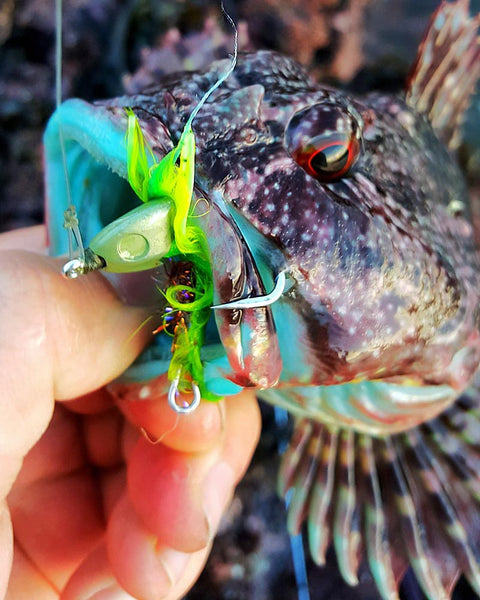
When I started fly fishing tide pools along the West Coast, there wasn’t any information about how to go about fly fishing these areas.
After much trial and error, I eventually started finding success using a mix of techniques from various aspects of fishing, which opened up an exciting and diverse new area to explore using a fly rod.
Hopefully this article will help ease the learning curve into this great and ever-changing fishery!
I'd only seen people catch rockfish on the fly off of jetties or boats, and my only saltwater experience had been limited to fly fishing for cod and mackerel off the Icelandic shoreline. So, I started off by doing what I knew, mainly long casts off the rocks into deeper areas and stripping back, but quickly ran into the problem of getting hung up on the kelp, which is thick in the Central Coast of California.
Eventually, I gave up on fly fishing the rocks for groundfish and moved to the surf, fishing for surfperch and striped bass. While the surf was a reliable source of saltwater action, the rocks remained an unsolved mystery.
The answer to my dilemma came in the form of a video, which showed gear fishermen using swimbaits in the shallow tide pool areas, basically jigging along the rocks.
The flies.
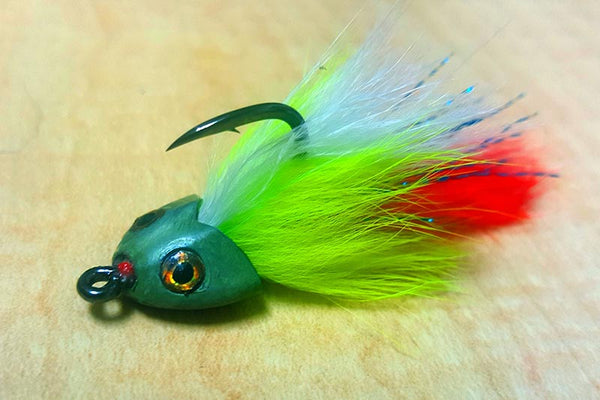
I sat down at the bench and tied up a couple flies using large Sculpin Helmets and red and chartreuse zonker strips to make a variety of body types. I'd found success with these colors off of jetty walls, so I knew the rockfish liked them.
I tie these flies using 1/0-4/0 saltwater heavy wire hooks, because these fish have hard mouths and can more than handle the hook size.
More and more, I’ve been tying these flies to emulate crabs and little octopuses instead of the general baitfish patterns I started out with, and the results so far have been great.
The setup.

The rod I use is an 7’11” 8wt Mojo Bass Fly, which is a stout little two-piece fly rod. The short rod is a great help since it helps with the short, accurate casts using heavy flies, and the stoutness is invaluable to keep the fish away from the rocks and kelp once they’re hooked.
The line I use is a 300-grain shooting head, but any sinking line will do. You could use a floating line since you aren’t going too deep, but the sinking line helps with keeping the fly in place once the waves and current start moving around in the channels and pockets you’re fishing in.
On the end of that I use a short (3 ft.) 20lb abrasion-resistant RIO Saltwater Leader and then tie that directly to the fly using a non-slip mono loop knot.
The fishing.
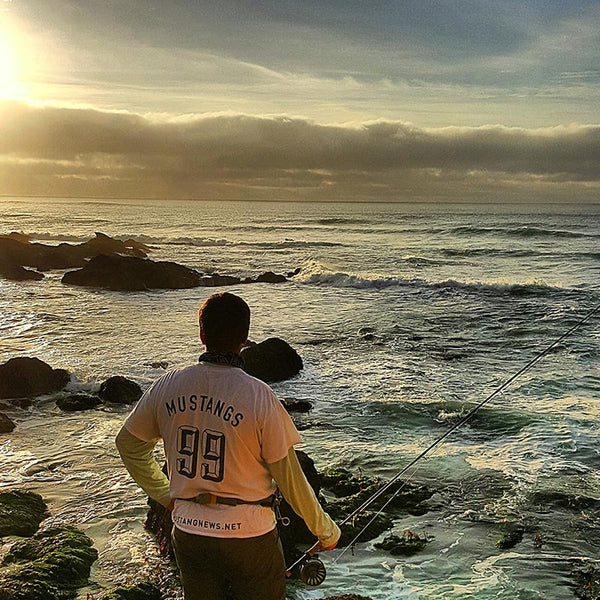
Fly fishing the tide pools is a surprisingly visual game, as most of the time you’ll see the fish come inspect the fly a couple times before committing to it, and you’ll almost always see your fly. It helps with avoiding snags, and detecting the take.
This means you need clear water and relatively shallow water as well, which means low tide, and low swells.
Casting is minimal and short.
Most of the time I’m fishing about 3 to 5 feet of line out of the tip of my guides, as I’m making VERY short casts to rocks very close to me.
How do you spot the best rocks?
They’re usually slanted a little bit forward, with an area underneath them where the fish can hold. This means that the casts have to go underneath the rocks, which can be achieved by lightly bouncing the fly off of the rock, or a nearby rock, to pop into the holding zone.
Once the fly is in the holding zone, let it get to the bottom, which is usually very quickly, and then do a short strip, pause, and then resume. Cast to the same spot a couple times until either a fish comes to inspect the fly, or if nothing happens, cast to the next likely holding spots.
Sometimes I’ll not even cast, but simply “dap” the fly into a likely pocket. Usually I’ll do this if I’m standing on top of the pocket, most likely out of the water on top of a rock looking down into the holding zone.
To do this, let the fly fall to the bottom and then jig it along the edge of the rock. You’ll see the fish dart out from under the rock to either inspect the fly or grab it.
Keep in mind these fish aren’t called groundfish for no reason. Both the many species of rockfish and cabezon utilize the rocks to their full extent, and often cling right to the side of these rocks in cracks along the bottom. Getting your fly into their feeding zone is crucial and don’t be afraid of fishing right on the rocks, these fish will be in very shallow water as well as the deeper pockets.
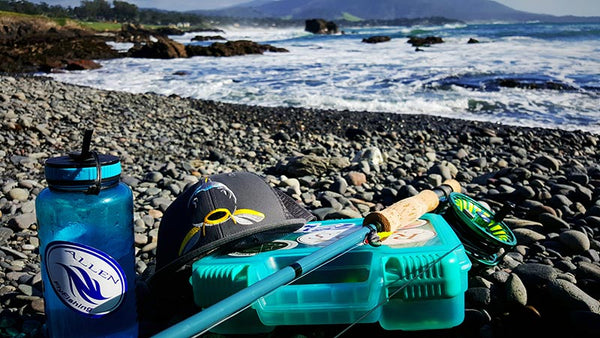
This type of fishing can get very dangerous, so it is always best to have a buddy with you and always keep an eye out for the next wave. Make sure to wear wading booties with a good grip, and move slowly, as the rocks are usually very slippery.
I’ve also made the mistake of casting to a seal I thought was a rock, and when the fly bounced off the seal, he turned and lunged at me in a terrifying fashion. There are stories of men being dragged underwater by seals and killed, so always double check that your rock is a rock!
This has quickly become one of my favorite fisheries, as the fish are strong and live in some of the most beautiful places on the planet. I’ve seen octopuses, seals, and many species of crabs and baitfish.
Usually these places are out of the way and can be secluded, and offer a great wild fishery as unpredictable as it is fun!
Want more articles like this?
Join the Flymen Mailing List at the bottom of the page!
About Dagur Guðmundsson:
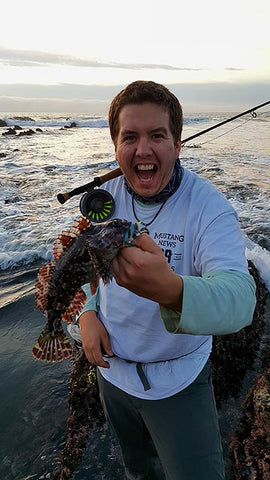 Dagur is a fly fisherman from Iceland, who attends university in San Luis Obispo, California studying Environmental Management. During the summers, he works at the West Rangá Lodge in Iceland, showing fishermen from around the world the beauty that is Iceland's most productive salmon river. When he's not at the world-class fisheries of Iceland, Dagur explores the diverse California fishery, both exploring the salt for rockfish, perch, striped bass and leopard sharks, and the freshwater for carp, bass, and steelhead. He loves exploring new aspects of the sport and spreading the world of fly fishing and conservation to people around the world.
Dagur is a fly fisherman from Iceland, who attends university in San Luis Obispo, California studying Environmental Management. During the summers, he works at the West Rangá Lodge in Iceland, showing fishermen from around the world the beauty that is Iceland's most productive salmon river. When he's not at the world-class fisheries of Iceland, Dagur explores the diverse California fishery, both exploring the salt for rockfish, perch, striped bass and leopard sharks, and the freshwater for carp, bass, and steelhead. He loves exploring new aspects of the sport and spreading the world of fly fishing and conservation to people around the world.


Comments on this post (5)
Ken Hanley talks about flyfishing the rocky coastline/tidal pools/ and rocky headlands in his books “Afoot in the Surf Zone” & “Flyfishing the Pacific Inshore”.. there’s been a number of online articles like yours posted as well…
Thanks for adding to this sadly under appreciated area of Pacific Coast flyfishing..
— Dean Endress
Great article. Didn’t realize dangers of Seals.
— Mike Carter
Hi Phillip, I actually use the 20lb Abrasion Resistand hard mono tippet offered by RIO, here’s the link: http://www.rioproducts.com/tippet/saltwater/hard-mono-saltwater/ and then cut that into the shorter 3 foot sections.
I should have been more clear about that!
— Dagur Gudmundsson
Good article. Did you mean 3 foot leaders or 3 meter leaders. Your link goes to 3 meter-10 foot leaders.
— Philip Eversman
Enjoyed the article very much.
— ken midas